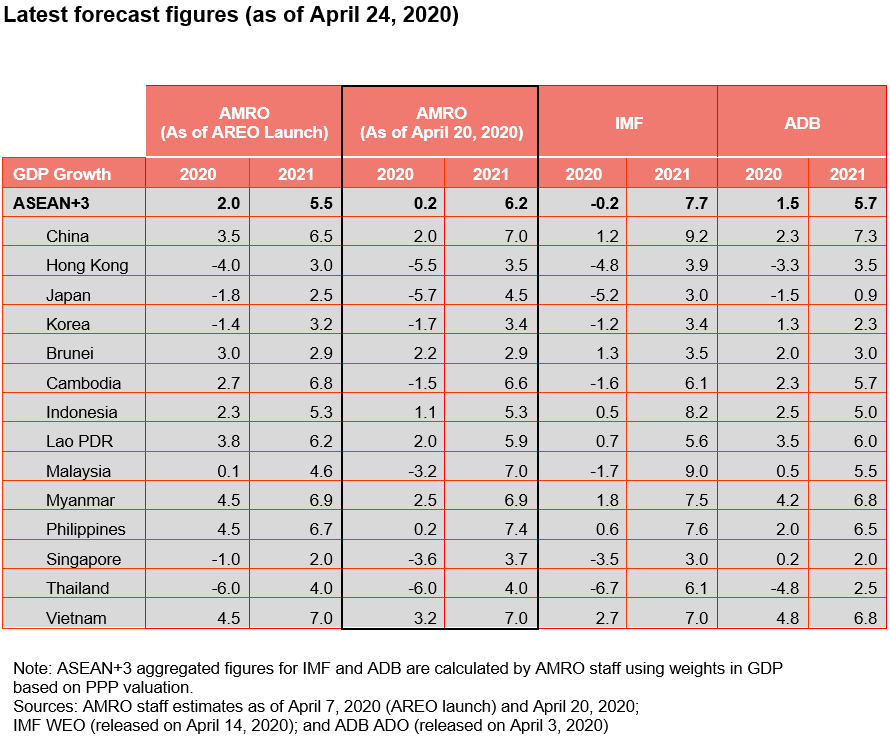Latest update: AMRO Chief Economist, Dr. Hoe Ee Khor discusses the impact of the COVID-19 pandemic on the Philippine economy with ABS-CBN news anchor Cathy Young. AMRO shaved the 2020 growth forecast for the Philippines to 0.2 percent. Dr. Khor stresses the need for mass testing, contact tracing and quarantine to prevent a more serious second wave. Meanwhile, the situation continues to evolve rapidly. Watch the replay here.
Transcript:
We have had to revise the forecast since the AREO 2020 report.
The situation has gotten a lot worse. The IMF and the World Bank have become more pessimistic. The Philippines is now growing by slightly above 0 percent, at 0.2 percent. The outlook has changed completely since we released the outlook.
On drivers that can pull the economy out of negative growth
Countries should focus on containing the virus first. The Philippines has been quite successful in containing the virus. The infection has peaked but the number of infections is not coming down fast enough. The government just announced an extension of the quarantine period. The experience of China and Korea show that the virus can be contained. But we have to be patient and strict with the containment measures.
We are concerned about a second wave of infection. If that happens, we will review the forecast again.
The virus is now a pandemic. We need to see how the recovery in Europe and the U.S. is. They are impatient to lift the lockdown; that is understandable, as the lockdown is very costly and painful. Many have lost their jobs. However, they have to be very careful or a second wave of infections will occur and another lockdown then would be even more costly to the economy.
On CMIM
CMIM is a liquidity line for economies hit by economic shocks, and it is ready to be used. The ASEAN+3 countries have been able to manage the crisis well. This is because economic fundamentals are quite strong. They have built up policy buffers and reserves. At the moment, there is no need to use it.
The size of the CMIM is USD240 billion. ASEAN-5 countries, including the Philippines, can access up to USD 24 billion from the CMIM.
On how to keep trade and cooperation robust
ASEAN+3 countries are keen to open up. The only reason slowing them down in opening up is the risk of a second wave of infections. This is the only uncertainty we see. There is a need to do a lot of mass testing, tracing, and quarantine. Once the infection rate is low enough, there is scope to open up certain sectors so that economies are not in complete lockdown.
Governments are trying to help companies stay alive and assisting the workers.

Explanatory Note: The COVID 19 pandemic has significantly increased the uncertainty and downside risks around the global and regional outlook. AMRO staff continuously take into account the fast-evolving developments in the health crisis and its impact on economic activity to update their analyses and projections on member economies in a timely manner.
